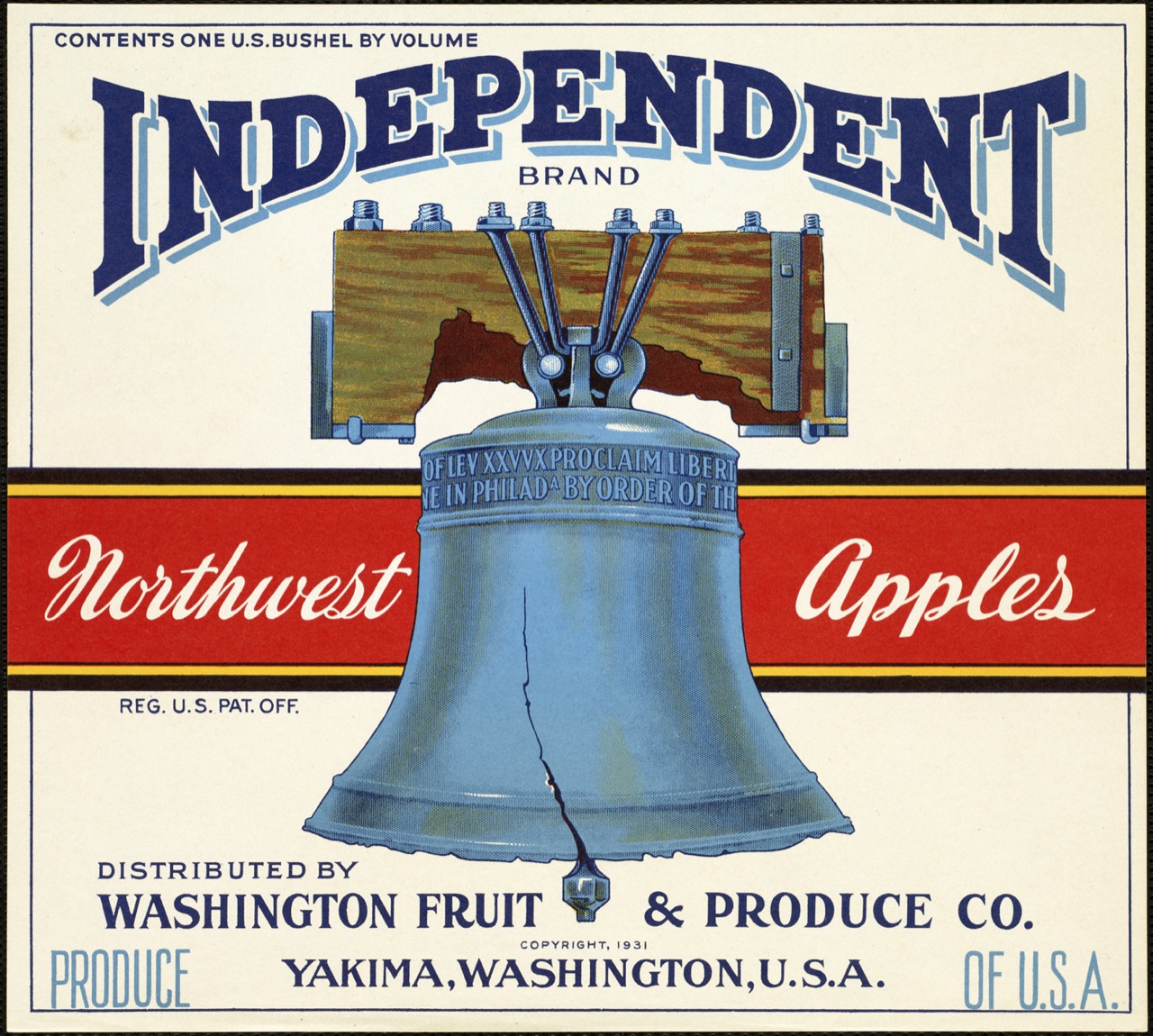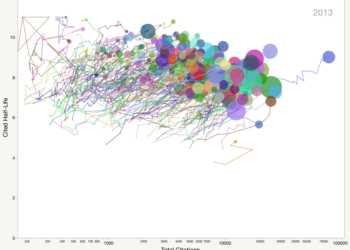
Lately, it seems that I’m always running an informal poll! Last year, when a staff member at the International Association of STM publishers asked me what I thought were the most important topics STM Societies should have on their publications committee agendas, I informally asked about a dozen folks and got some great feedback. A few of those responses were explored further in a session during STM Society Day, the pre-meeting program for the 2015 STM Annual US Conference in Washington DC.
But, one question that came up was not explored at the STM session so we decided to ask the Chefs: What is editorial independence and how does it impact publishing?
On the surface this feels like such a straight-forward question one might wonder why we would even cover it. However, this question is filled with nuance. If expectations are not clearly set, misunderstanding can cause angst, poor working relationships, and even legal action. Here’s what the Chefs had to say:
Joe Esposito: Editorial independence is sometimes called by the more colorful name of the “church-and-state” principle. Editors rule the church, the state is run by the business types. This is an important principle in advertising-supported media where a publication may be pressured to go easy on an advertiser, but as anyone can see, if you do that once, you can’t do it a second time, as it destroys the brand.
In the world that Kitchen readers inhabit, the idea of business people interfering with editorial decisions is so outrageous that the situation almost never comes up. I can’t imagine it myself.
Oddly, professional societies in my experience think this is a real problem. Here is the scenario: a society is considering a publishing services deal with Elsevier, Wiley, whomever. The society, having heard from the librarians at their institutions that the people who work for commercial publishers are Certifiably Bad Guys, is fearful that the large publishers will try to take over editorial control. Of course, the last thing a publisher like this wants to do is to muck around with editorial, as that is where the costs and headaches are.
Editorial independence is simply part of the DNA of the industry.
Ann Michael: Editorial independence at its core means that a publisher may never tell an Editor in Chief (EIC) what he or she can or cannot publish in the journal. The EIC is the arbiter of what content is suitable for the journal, based on its mission and goals. For article accept/reject decisions this is relatively straightforward.
The publisher also has a remit. The publisher is charged with the financial health of the journal. Sales and licensing, marketing, branding, distribution, and new product development are often the purview of the publisher. But the lines are never crystal clear. For example, new product development often requires the collaboration of publishing and editorial to define a product or service that is both viable in the market and valuable to the user community.
Other grey areas are related to the display and repurposing of content, whether in print or digital form. Can an advertisement related to a drug mentioned in a scholarly research article be presented adjacent to that article? The answer in medicine is usually a resounding NO! There can also be valid discussions around repurposing sponsored collections of articles. For some of these issues, societies and commercial publishers develop policies and guidelines to help address common points (e.g., many medical journals have policies on “Advertising adjacency”).
Many organizations help to ensure editorial independence through their governance structure. In cases, for example, where the EIC reports to a publisher or even a Society CEO, it is very common that he or she also has a direct line of communication and escalation to the Board of Directors and that the BOD may take on decisions where editorial independence is in play.
But it’s important to remember that there is always the potential for a conflict where the mission of the publisher (to sustain the journal financially) and the mission of the editor (to define the journal editorially) intersect. Most of these conflicts have nothing to do with editorial independence. The look and feel of the journal online (design), staffing of the editorial office, or whether the journal has a mobile app are all places where editorial input is needed, but they do not impact editorial independence.
The bottom line is that a truly successful journal requires a collaborative, trusting partnership between editorial and publishing. It takes a healthy and interactive team to create a vibrant and healthy publication!
Alice Meadows: The Scholarly Kitchen itself is a great example of editorial independence, in my opinion. It was founded by and is still published under the auspices of the Society for Scholarly Publishing – to help fulfill the society’s mission of advancing scholarly publishing and communication – but is completely editorially independent of the society. This means that all the Chefs are free to publish posts that reflect their own opinions, which are not necessarily those of SSP, and which SSP has no say in. That doesn’t mean there no editorial control, just that the control is not directly in SSP’s hands. Instead they (and we!) rely on our editor-in-chief, David Crotty, who’s appointed by the Board but operates independently from them, to vet the content – which, in fact, he does with a very light hand. This enables the Kitchen to reflect a wide diversity of voices and opinions – exactly the reason why we enjoy writing for it and you (hopefully) enjoy reading it!
Looking beyond the Kitchen, this same model of editorial independence – the separation of what is published in a journal from the organization that owns that journal – helps ensure that article selection is based on the merits of the article and its suitability for inclusion in the journal. Not, for example, based on whether their organization is a paid advertiser or sponsor of the journal, or whether the owner is a supporter (or detractor) of their work.
Karin Wulf: For humanities journals, most of which are small operations, single journals published by a society often through the auspices of a university press, the integrity of editorial independence is critical. This goes beyond the publishing “separation of church and state,” though of course that’s important, too. The Editor should be free from pressure by the society or the press to accept material from an academically influential author or a potential donor.
The Editor’s ability to make independent assessments about submissions is another significant aspect. Editorial board members have a pretty wide range of responsibility; some are tasked with reviewing manuscripts and creating special issues of the journal, while others oversee the work of the journal without getting involved in routine operations. Some larger journals have Associate or Assistant Editors who work as a committee with the Editor. In any case, the Editor’s ability to respond to manuscript reviews without being held accountable either to a democracy of the reviewers or to the inappropriate influence of the board is key. For example, if an Editor receives five reader reports, and four are positive but general and one is negative but detailed, lengthy and knowledgeable about the topic, the Editor has to be able to give greater weight to the one that s/he finds persuasive.
But the integrity of independence cuts both ways. If the scholarly community doesn’t respect the Editor’s integrity, they won’t patronize the journal either by submitting their work or by reading and citing the publication.
Angela Cochran: Society journals are an arm of that society and often carry some pronouncement that the content of the journals should align with the goals of the society. This should not mean that the journal editor is required to publish content in support of the society. It also doesn’t mean that the editor should decline any manuscripts on the basis of it being critical of the society or in opposition to society talking points. In fact, societies should allow their journals to be the platform for debate when it comes to the profession.
Societies for which membership is inclusive of academics and practitioners may see more friction when it comes to editorial independence. Practitioners who are not engaged in academia and research in general don’t always understand that articles published in the journal may be theoretical or that there is a self-correcting nature in scholarly publishing. Questioning common practices and theorizing on better ways to meet the end goals is the entire point!
In my experience, there are times when a practitioner within the society calls into question an editorial decision on a paper they see as utterly ridiculous. In these cases, editors need to explain the peer review process and invite the practitioner to respond to the paper in an appropriate way (authoring a discussion, a forum on the topic, a letter to the editor, or their own paper).
While these incidents are not a regular occurrence, they can be very emotional. I am happy to say that is it also my experience that the leadership within societies typically understand the importance of editorial independence and will back the editor on his or her decisions.
Societies certainly want to protect their brand and reputation. For many societies, having strong debate and showcasing opposing viewpoints in the journals provides balance and shows that the organization is open to discourse.
_____________________
As usual, we would really like to hear from you. What’s your opinion or experience? How does editorial independence impact your publications?
(…and if you’re one of the ones that has answered any of my informal polls – thank you!)
Discussion
24 Thoughts on "Ask The Chefs: What is Editorial Independence and How Does It Impact Publishing?"
This seems like an interesting case relevant to the topic of editorial independence:
http://www.timeshighereducation.co.uk/news/resignations-threat-over-taylor-and-francis-censorship/2013752.article
It’s surprising that no one has mentioned legal constraints that a publisher must sometimes impose on editorial independence. These generally have to do with the possibility that a work, whether article or book, may infringe copyright or commit libel. Questions of libel likely arise more for books than for journal articles. It happened in at least one instance for a book we considered publishing at Penn State University Press, where the concerns about potential libel were strong enough for us to decided against reviewing a manuscript further. There was also one instance of non-legal pressure from the University during my tenure as director there. A prominent Pennsylvania Congressman, John Murtha, who was responsible for getting major grants from the Defense Department to find research at Penn State, wrote a memoir about his time in Congress called “From Vietnam to 9/11,” and my boss, the VP for Research, made it clear in no uncertain terms that the Press was going to publish his book. It was an uncomfortable situation to be in, but fortunately did not result in any crisis as the book was thoroughly vetted by experts and turned out to be a solid contribution to political science. But, initially, this episode made for some nervous moments.
Sandy:
The internal decisions as to what to publish or not are part of the editorial process. That is what the editorial side of the house does. The Murtha case is interesting, but again the editorial side of the house reviewed the MS and found it worthy. If it had not, you would have gone back to Murtha and showed him the reviews. A person such as he, would not want his name sullied and either revised or withdrawn. Should you have faced a recalcitrant Murtha and demanding VP, you could have said OK we will publish it but list it as fiction!
Reblogged this on cloudarian.
My society was scrupulous about the independence of its EIC, but it takes constant vigilance. Even an innocent remark by a board member about an in-process article would draw a gentle but firm “hands off” rebuke from me. More than once, I had to answer an abrupt “no comment” to a query.
Open access presents more challenges, as editorial decisions directly link to revenue. We took the step of isolating the EIC from hybrid OA decisions, to avoid even the appearance of bias. Of course, there nothing like a rejection rate exceeding 50 percent to establish editorial independence!
Ken – that’s an excellent point. Open Access does complicate editorial independence issues because of the direct link to revenue. Have you gotten any push back or comments about taking the EIC out of hybrid OA decisions? It is an interesting approach in a hybrid model as it would appear to potentially change the voice and scope of the journal (removing the EIC) – basically saying he/she is the EIC of the traditionally published content only.
I would think there is a place for clear (and evolving) standards regarding what is and isn’t published. I say evolving because we can never anticipate all situations and exceptions always arise, but isn’t there a way to agree in advance to the scope of the journal and the criteria for inclusion?
What is editorial independence and how does it impact publishing?
.
One way to answer the FIRST PART of the question is to look for definitions (on the Internet). Here are three definitions (read also the full text following the links):
.
“The ICMJE adopts the World Association of Medical Editors’ definition of editorial freedom, which holds that editors-in-chief have full authority over the entire editorial content of their journal and the timing of publication of that content …”
(ICMJE: http://tinyurl.com/ll7d9v8)
.
“Editors should have total responsibility, authority, and accountability for the scientific content of the journal, an arrangement that is usually referred to as ‘editorial independence.’ ”
“Editors should have independent authority to select their editorial boards.” “Editors and publishers, sponsoring societies, or journal owners should have a signed contract to ensure proper editorial freedom and responsibility. The contract should identify …” (CSE: http://tinyurl.com/o9437o7)
.
“Publishers should work with journal editors to set journal policies appropriately and aim to meet those policies, particularly with respect to: editorial independence, research ethics …, authorship, transparency and integrity …, peer review and the role of the editorial team beyond that of the journal editor, appeals and complaints.” “Publishers should define the relationship between publisher, editor and other parties in a contract, respect privacy (… for peer reviewers), protect intellectual property and copyright, foster editorial independence.”
(COPE: http://tinyurl.com/nyvacq7)
.
.
To give my observation to the SECOND PART of the question: “How does editorial independence impact publishing?”
.
Following above definitions, a publisher is setting up a publishing infrastructure which includes a (template) contract for Editor-in-Chiefs (EiCs) and for editors and sets up the outline for a new journal or has a vacancy for an EiCs on an existing journals. Eager academics apply with impressive CVs, are vetted, accepted, and sign the EiC contract. The EiC fills the Editorial Board (EB) with editors (making use of the contract template the publisher has prepared). Manuscripts come in and are being put through peer review. The publisher helps as much as possible with staff assigned to the Editorial Office of the journal. Obviously we are living in a “real world”, some editor (assigned by the EiC) never respond to any e-mail or decline every request to review a manuscript. The EiC has no time for longer periods and is replaced by another editor of the EB (as everyone is hoping the EiC will soon find time to do the duties as promised).
.
In such a situation a controversial paper causes loud criticism on Internet blogs. Investigative (self declared) journalists write to editors on the EB (for transparency all editors are portrayed on a full page including their e-mail address). Editors from the EB (who otherwise did not answer to journal matters) now respond to these questions like this: “I do not know, why I am an Editor for that journal.” “I was never asked to do anything.” “I have never reviewed for this journal.” “I am listed as the Editor-in-Chief, but as it has turned out, I have no substantive responsibilities and am not involved in editorial decisions.” … The blogs blame the PUBLISHER(!) for publishing the paper.
.
What do we learn from this?
1.) Editorial independence has two sides: a) The publisher gives away responsibility and control. b) The academic as editor or EiC has accepted duties (and has even signed a contract). Work arising from these duties has to be done fully and in a timely manner. If duties can not be met, the contract may not need to be renewed at the end of its term. Otherwise the editor has to ask the EiC (the EiC has to ask the publisher) to find ways to get out of the contract before the term ends.
2.) Also the scholarly community has to better understand what editorial independence means. When criticizing, scholars should please first remember who is responsible for what. Blame can only be allocated according to responsibility.
Editorial independence does indeed have two sides – two legitimate sides that need to be kept in balance! One side is focused on the content of the publication (and the responsibilities are consistent with your 1 a + b) and one side is focused on the viability of the publication. The viability can be measured financially, by reach or “impact”, or by other factors. The owner/sponsor/publisher of the publication has the charge to meet “viability” requirements. The conflict seems to occur when content impacts viability or viability impacts content. I’ve seen this originate from both sides.
People generally think about the publisher infringing on the editor’s position, but what about the opposite? What about an editor that uses the journal as their personal platform on issues unrelated to the journal’s scope? What about an editor that accepts the contract and scope of the journal and then decides (through accept/reject decisions) that they will radically change that scope (e.g., in medicine perhaps taking a journal with a clinical audience and only accepting basic science research articles)?
This is more of a tangled web than we would like – it always comes down to clear expectations and good relationships (and hopefully having the right people in the right jobs so that they can work productively through the exceptional cases).
Yes! One way to disentangle the tangled web (or not to let it entangle in the first place) is to be precise in the contract. I think these points should be in the contract of an EiC for an OA journal working on APC (I focus here on those points that should help the publisher to be protected against the usual attacks; CSE has more):
.
1.) Take an active part as EiC in the peer review process as defined here … 2.) Take the ultimate responsibility for the peer review process. 3.) Supervise the selection of editing principles of manuscripts with respect to scientific writing and layout conventions. 4.) Approve bulk promotional e-mails for the journal. 5.) Agree to changes in Article Processing Charges. 6.) Select Editorial Board members for the journal. 7.) Your benefits as EiC are …
.
A complaints procedure should be defined for complaints from the EiC and another one for complaints from Editorial Board members.
I think OA presents the most interesting proposition regarding not only editorial independence but also quality. It takes X papers to support the journal. That is an economic truth. What happens when the X number begins to decline? http://scholarlykitchen.sspnet.org/2014/03/07/plos-one-output-falls-following-impact-factor-decline/
Is Plos responding by just publishing what comes across the transom? Are editors being pressured? Is it seeking more seed money? Will it go through a series of layoffs? Will it raise prices?
A commercial publisher faces reality and plans for failure. The journal doesn’t make it! Shut it down the market has spoken. Something to be said for editorial independence in a commercial environment.
A view from the management side. Never get involved in editorial decisions. Censorship or violation of a disciplines ethics can hurt the publisher more than help it. To be labeled a pariah can ruin years of reputation.
Is Plos responding by just publishing what comes across the transom? Are editors being pressured? Is it seeking more seed money? Will it go through a series of layoffs? Will it raise prices?
Even with a drop in the total number of articles being published, PLOS remains enormously profitable, so the answer to all of your questions is “No.”
David:
If the answer to all is no then why has the impact factor declined from 4.3 in 09 to its current 3.5? Does this reflect a quality issue? http://scholarlykitchen.sspnet.org/2014/03/07/plos-one-output-falls-following-impact-factor-decline/ It is interesting to note that their discipline specific journals have higher IF than POne. Thus, I am not too sure that in an effort to sustain profitability Plos One is publishing articles they may have rejected say 2 years.
I have no desire to dispute your statement, nor get into a debate regarding the success of Plos. It shows revenues and support of some $46 million and dropped some $10 million to the bottom line from revenues and support. Of course they are not taxed. Additionally, they do not break out their journals as to which are making money and which are not. Nor am I able to find how many articles each journal is publishing per year.
Regardless, it is a nice business.
Remember that the Impact Factor is backward-looking. The drop in IF is likely due to the increase in size of the journal previous to the current year, hence an increase in the denominator (number of articles published) with a higher number of low-citation articles crowding out the smaller number of high-citation articles. The current decline in the number of papers published may result in a cyclical increase in IF in two years’ time, which may spur more submissions, a lower IF, a drop in submissions, wash, rinse, repeat.
PLOS would likely argue that this does not reflect a quality issue, as they refuse to recognize the value provided by the IF as a relevant measure of quality for any given article. PLOS ONE’s editorial policy is to accept all articles deemed “methodologically sound”. The fact that the number of articles they are accepting is declining appears to be a refutation to your assertion that they may have lowered their standards.
The one area where the publisher may most impact the editorial shape of the journal is in the selection of the editor herself. While generally not true in academic societies, for proprietary journals the selection of the editor is generally undertaken by the publisher (hopefully with some advice from people in the field). Since the EIC is the most important person in shaping the editorial content of the journal, the publisher’s decision on who edits a journal is a profound influence.
Very true, thanks! The publisher chooses the EiC. After that the publisher has to let the journal (ship) on its journey with its EiC (captain). The contract with the EiC will most probably say that the EiC appoints the editors onto the Editorial Board (EB). The EiC will also ultimately decide about the Aims & Scope (together with the EB). The only chance to point the ship (journal) into another direction on its journey is when the term of the contract with the EiC ends. Instead of renewing the contract with the acting EiC, the publisher may prefer to appoint another EiC with a different focus.
.
I think your comment could also have been the bottom line of my previous post (above): http://scholarlykitchen.sspnet.org/2015/04/30/ask-the-chefs-what-is-editorial-independence-and-how-does-it-impact-publishing/#comment-153171
Although I am somewhat late with this response, I would like to react to Joe Esposito’s confidence in editorial independence, akin to the “church-and-state” principle. He wrote:
“In the world that Kitchen readers inhabit, the idea of business people interfering with editorial decisions is so outrageous that the situation almost never comes up. I can’t imagine it myself.”
Although possibly rare, such deviant cases are often telling revelations of the ‘true’ nature of the relationship between editor and publisher. The case in point is the conflict between the editors of Prometheus: Critical Studies in Innovation and the publisher Taylor & Francis. The case is spelled out in detail in an article in Times Higher Education (THE), 5 June 2014, (http://www.timeshighereducation.co.uk/news/resignations-threat-over-taylor-and-francis-censorship/2013752.article) with a follow-up in the same publication on 19 June 2014 (http://www.timeshighereducation.co.uk/news/taylor-and-francis-apologises-after-censorship-debate/2014017.article). Basically, the dispute related to criticisms of the business practices of (certain) publishers. The issue was delayed by two months as T&F staff considered options, forced editorial revisions in the article, and amended all of the articles with a disclaimer penned by T&F.
Because of this heavy-handed treatment, the journal editorial board threatened resignation and, in response, T&F publicly apologized for the affair, although stepping short of terming the interference censorship or using words like ‘sorry’ or ‘mistake’ in the explanatory letter; see details in the second THE article. On the basis of this acknowledgement, the board withdrew their threatened resignation.
Esposito may be choose to disregard such cases, but in so doing I feel he discounts revelatory exchanges between editor and publisher that seriously challenge his “church-and-state” principle.
Nick Jankowski
Nick, thank you for pointing this out to me. Richard Poynder also noted this incident. I had not been aware of it. It is outrageous. In the companies where I have worked, it is the kind of thing that gets people fired. It’s also bad from a business point of view, as it seriously tarnishes the T&F brand.
A timely topic for discussion. Editorial independence is seen as sacrosanct, however editors also have responsibilities to their publishers and Associations, as well as to authors and readers (and peer reviewers, editorial boards, etc.). There are always some conflicts and compromises to be negotiated. EASE published the Science Editors’ Handbook in 2013 and several chapters cover these responsibilities as well as the premis of independence (COI alert, I was the editor). To be totally independent also means being autocratic and potentially despotic, so there also has to be an element of accountability to any editorial role. http://www.ease.org.uk/publications/science-editors-handbook



